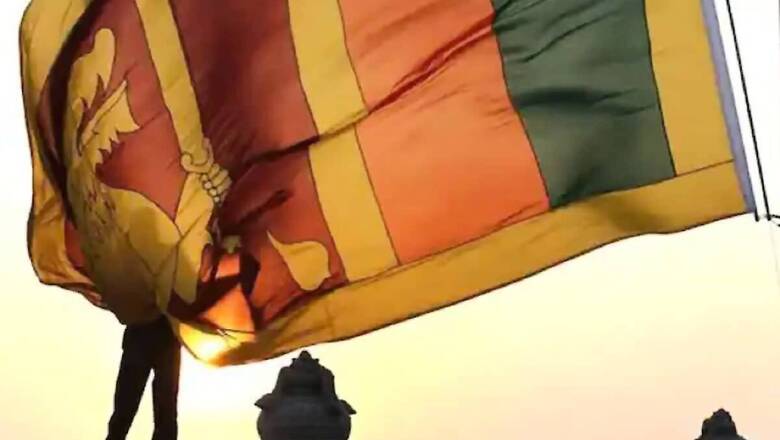
views
India has continued its stand of supporting Sri Lanka in UNHRC and has once again abstained from the voting process on a resolution demanding war crime investigation against the Sri Lankan government and its army. The resolution was recently accepted after the UN body approved it and asked for an investigative mechanism to investigate human rights abuses in Sri Lanka in a civil war that killed thousands of civilians, mostly Tamil.
Political parties in Tamil Nadu have decried the stand taken by the government calling it betrayal of the State of Tamil Nadu and Tamil people in Sri Lanka but when we see the realpolitik behind it, we can understand why India has adopted this strategy.
Because India cannot allow China to make deep inroads in Sri Lanka.
Because an increased economic dominance may allow China in future to have political and strategic dominance.
An increased Chinese footprint in Sri Lanka is a threat to India as it challenges India’s influence in the Indian Ocean region and poses new security challenges to India’s naval superiority in the geo-strategic area. In 2014, when two Chinese submarines and a warship docked at the Colombo port, it sent alarm signals because it was a rare event then but now, with the frequent Chinese visits, the clear writing is on the wall that China may well soon be positioned in our immediate neighbourhood.
For Sri Lanka, India was once a close relative because of the shared history and culture but now China has become the country’s closest friend, as declared by Sri Lanka’s Foreign Minister Dinesh Gunawardena recently.
Beijing sensed an opportunity in Sri Lanka during the civil war against LTTE, a military separatist organisation that wanted to create an independent Tamil state. Then no country including India was willing to supply arms and ammunition to Sri Lanka. While India said it would supply only non-lethal weapons, China not just extended the strong diplomatic support but also helped the country win the civil war by supplying required arms and ammunition.
The move made the existing Sri Lankan leadership heavily pro-China. It was also supported well on the ground with increased Sri Lankan public trust that it was China who finally helped Sri Lanka win the civil war.
The casualty – India-Sri Lanka relationship. India realised this emerging threat in its immediate neighborhood. And it called for immediate reconciliatory steps to be taken.
After winning the civil war, Sri Lanka saw a huge international pressure coming up to probe its wartime atrocities. The UN in March 2009 said that the Sri Lankan army and the LTTE both committed war crimes which killed thousands of civilians, mostly Tamil. Times newspaper reported that at least 20,000 people were killed just in the last phase of the war. There were allegations that Sri Lanka used heavy weapons to shell safe zones of civilians, hospitals and food distribution lines and conducted extra judicial killings.
To rebut these allegations and to justify its action in the civil war, Sri Lanka moved a resolution in the UNHRC in May 2009. The Resolution S-11/1 stressed that Sri Lanka had a sovereign right to act to defend its unity and territorial integrity and appealed for financial support in post-war reconstruction.
To counter the increasing Chinese footprint, India supported this Sri Lankan resolution which was later passed by the UNHRC with 29 votes in its favour and 12 against it. India, along with Brazil and Cuba also helped Sri Lanka by preventing the passage of another strong anti-Sri Lankan resolution presented in the UN by some countries. For India, respecting Sri Lanka’s unity, stability and territorial integrity were main counter points. Also, Sri Lanka needed support now to move onwards on the path of reconciliation and reconstruction.
But Indian Tamils were greatly peeved with it. Tamil Nadu’s Chief Minister M. Karunanidhi, whose party DMK was in the ruling alliance at the Centre, wrote to then Prime Minister Manmohan Singh that the Sri Lankan resolution was against the interests of Sri Lankan Tamils. AIADMK’s Jayalalithaa wanted Sri Lanka’s constitution to be amended and the UN and human rights organisations to be given access to the areas ravaged by the war.
So, in 2012, India took a stand that was more in line with the concerns of its domestic politics. It voted against Sri Lanka in a UNHRC resolution. Resolution 19/2 was drafted by the US against Sri Lanka. Manmohan Singh said it was a way to express the Indian concern on the situation of Sri Lankan Tamils.
China backed Sri Lanka in rejecting this resolution. The country said the resolution was an interference in Sri Lanka’s domestic affairs, and could in fact, affect the reconciliation process ongoing in the country.
In 2013, repeating its 2012 stand, while voting for the UNHRC Resolution 22/1 on war crimes which was drafted again by the US against Sri Lanka, India, in fact used some pretty strong words. Dilip Sinha, Indian envoy to the UN, called for an independent investigation into Sri Lankan war crimes.
By that time, China had made deep inroads in Sri Lanka. The country has got Chinese loans and grants worth $4 billion since 2009 with China funding and developing 70% of the infrastructural projects in the country including the deep-sea Hambantota port.
A Sri Lanka getting more and more financially dependent on China was a warning message to India that China, through its financial expansion, could finally push its ‘string of pearls’ policy in Sri Lanka. Through its ‘string of pearls’ strategy, China aims to develop commercial and military establishments in the Indian Ocean Region, especially in India’s neighbourhood.
It was the time for India to do a course correction on this matter, and at the same time, it had to be a balancing act to address its domestic concerns or the inevitable backlash from Tamil Nadu.
And abstinence was the only way to show that India, in fact, was friendly towards all the stakeholders here, Tamils in India, Tamil in Sri Lanka and Sri Lanka itself. It was coupled with the fact that India was a major financial stakeholder in the Tamil settlement process in the island nation.
In March 2014, UNHRC Resolution 25/1 against Sri Lanka’s War Crimes, India abstained arguing that the resolution ignored the reconciliation steps taken so far by Sri Lanka. India opposed the resolution’s demand that the Office of the UN High Commissioner for Human Rights (OHCHR) should investigate the human rights situation in Sri Lanka. India called it an intrusive approach that undermined Sri Lankan sovereignty.
The next three UNHRC resolutions, Resolution 30/1 in 2015, Resolution 34/1 in 2017 and Resolution 40/1 in 2019, were adopted without a vote and every time India supported Sri Lanka.
With the 2015 resolution, India hoped for consensus to evolve and backed Sri Lanka’s opposition to foreign judges to probe war crimes. India, again decided to go with the consensus in the 2017 resolution respecting Sri Lanka’s commitment against the expectations made. During an interactive session of 2019 resolution, India highlighted the reconciliatory steps taken so far and appreciated the progress made by Sri Lanka.
And followed the same approach with the recent resolution presented in the UNHRC. While abstaining from the voting process on March 23, India said it respected both Sri Lanka’s unity, stability and territorial integrity and Sri Lankan Tamils’ equality, justice, dignity and peace.
The stand taken by India was appreciated by both, the Sri Lankan government and the Tamil National Alliance (TNA), a political alliance representing Tamil community of the country. Tamil Nadu’s political parties called it a betrayal but that can be seen more as an electoral statement just before the State Assembly election on April 6.
While Gunawardena thanked India for abstaining from voting, TNA said that the Indian statement ahead of the vote, of respecting both Sri Lankan governments and Sri Lankan Tamils considerations, greatly encouraged us.
Read all the Latest News, Breaking News and Coronavirus News here















Comments
0 comment